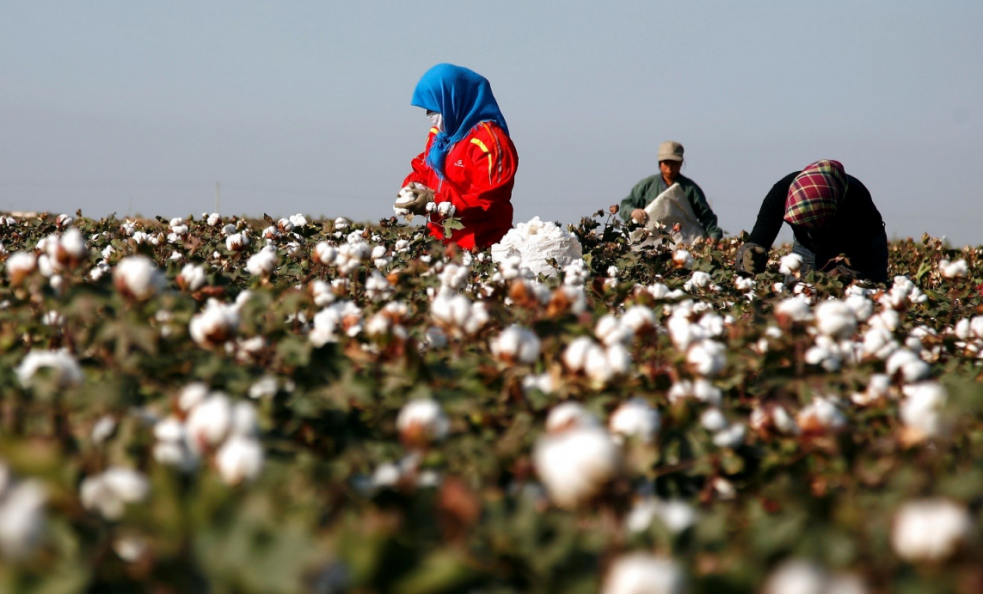In Mar, more downstream plants resume operation. Despite of export order cancellation in mid-Mar, plants have not curtail production or suspended operation immediately. Operating rate climbed up overall compared to previous month, and cotton consumption also increased. However, affected by the coronavirus pandemic, cotton consumption remained lower compared to the same period of last year. For stocks, ginners in Xinjiang have restarted production gradually from early Mar, and ginning volumes of new cotton increased from Feb, so the social cotton stocks moved up. But with the falling cotton prices, market players were willing to sell the cotton to the government, so the stocks in state warehouses increased, and the yearly growth of social stocks narrowed compared to previous month.
 1. China cotton consumption assessment The resumption of cotton yarn mills, the largest cotton consumer, continued to improve in Mar. From mid-Mar, cancellation in textile and apparel export orders was seen, but not many cotton yarn mills suspended operation or cut production immediately, and most of them could maintain the operation. But affected by the pandemic, consumption of cotton has reduced much year on year. According to CCFGroup, China cotton consumption is assessed at 612kt in Mar, up 83.7% month on month, but down 16.7% year on year. In the first quarter of 2020, cotton consumption is assessed at 1.408 million tons, a fall of 27.5% year on year. In 2019/20 season (from Sep 2019 to Mar 2020), cotton consumption is assessed at 4.182 million tons, down 14.5% year on year.  2. China cotton stock assessment New cotton output: ginning factories in Xinjiang and inland have not restarted work basically in Feb, and ginning volumes are supposed to be around 14kt. From early Mar, ginners in Xinjiang began to resume operation successively, and ginning volumes of new cotton increased obviously from previous month, while operating rate in inland remained very low as growers in inland were unwilling to sell seed cotton with falling cotton prices. In Mar, new cotton ginning volumes are assessed at 87kt. State cotton reserves: from Mar 1 to Mar 31, 208kt of new cotton was reserved into state warehouses, so this part of volumes was deducted among the all social stocks. Import volume assessment: in Mar, the arrived imported cotton was mainly procured during Dec 2019 and Jan 2020, and during this period, there was no impact of the coronavirus pandemic, and defaults were rarely to see. Volumes of Brazilian and Indian cotton remained large in Mar. But from Sep 2019, the domestic cotton prices were almost lower than international cotton, so the monthly import volumes were lower from last season. In Mar, cotton imports may reach 120kt, down 19% year on year.   In general, China social cotton stocks are supposed to be 5.79 million tons by end Mar, down 9.6% month on month, and up 11.9% year on year. (The data may have slight correction later.) The industrial stocks are assessed at 729kt, and commercial stocks at 5.061 million tons.
 Social cotton stocks are slightly higher in Mar compared with Feb. Operating rate of spinning mills climbed up in Mar. In the first half month of Mar, mills mainly concluded the pre-holiday orders and yarn sales were tolerable. So with low cotton prices, mills increased the feedstock procurement slightly. Later, with the order cancellation and weaker yarn sales, mills began to cut feedstock inventory, but the cotton procured previously needed time to be digested. | |||||||||||||||||||||||||||||||||||||||||||||||||||||||||||||

China cotton consumption and stock assessment in Mar, 2020
Το περιεχόμενο του άρθρου δεν είναι διαθέσιμο στη γλώσσα που έχετε επιλέξει και ως εκ τούτου το εμφανίζουμε στην αυθεντική του εκδοχή. Μπορείτε να χρησιμοποιήσετε την υπηρεσία Google Translate για να το μεταφράσετε.

